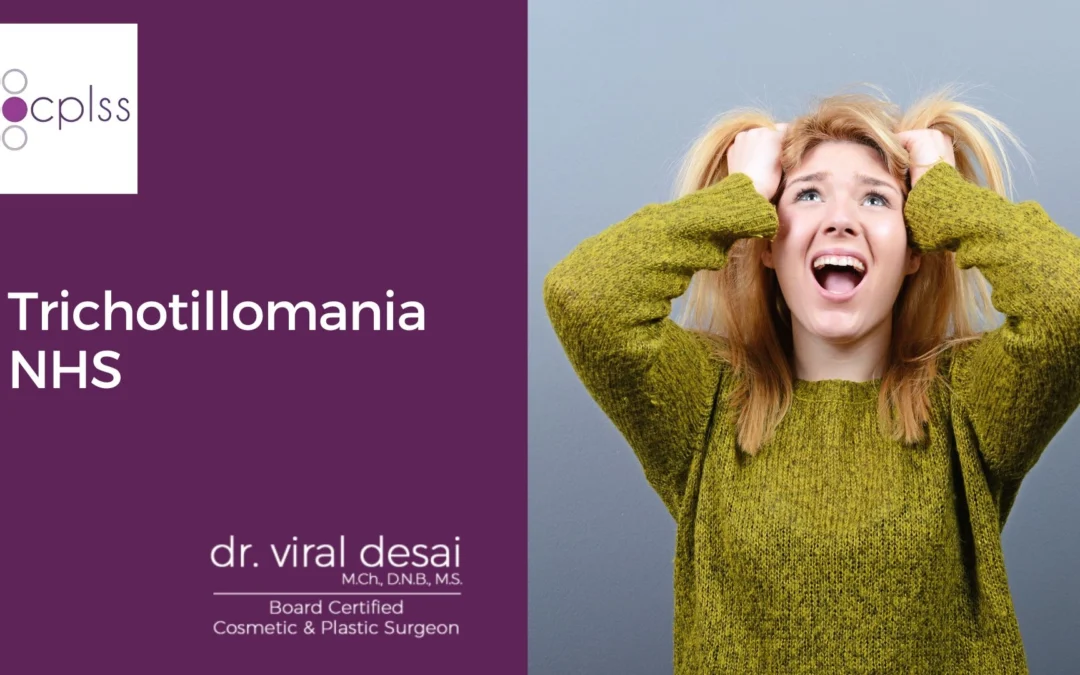Trichotillomania NHS is a condition that often goes unnoticed but can have a significant impact on individuals’ lives. In this article, we delve into the world of trichotillomania NHS, exploring its causes, symptoms, treatment options, and coping strategies. Dr. Viral Desai unravels the mysteries surrounding this condition and provide valuable insights for those who may be affected by it.
Trichotillomania NHS: What Is It?
Trichotillomania NHS is a psychiatric disorder characterized by the recurrent and irresistible urge to pull out one’s hair, often resulting in noticeable hair loss. It can affect people of all ages and genders, and understanding its nuances is crucial for effective management.
Understanding Trichotillomania NHS
In this section, we’ll take a closer look at the various aspects of trichotillomania NHS, including its causes, symptoms, and common triggers.
What Causes Trichotillomania NHS?
The exact cause of trichotillomania is not fully understood. However, it is believed to be a complex condition with multiple factors contributing to its development. Some possible causes include:
Biological factors: There may be a genetic predisposition to trichotillomania, as it tends to run in families. Mutations in certain genes, such as the SLITRK1 gene, have been associated with the disorder. Neurochemical imbalances, particularly involving serotonin and dopamine, may also play a role.
Psychological factors: Trichotillomania is often associated with underlying psychological conditions, such as anxiety disorders, obsessive-compulsive disorder (OCD), and depression. It may serve as a coping mechanism or a way to relieve tension and anxiety.
Environmental factors: Stressful life events, trauma, or significant emotional distress can trigger or exacerbate trichotillomania symptoms. These factors may interact with genetic and psychological factors to contribute to the development of the disorder.
It’s important to note that trichotillomania is a complex condition, and the causes can vary from person to person. Further research is needed to fully understand the underlying mechanisms of trichotillomania.
Common Symptoms of Trichotillomania NHS
- Repetitive hair-pulling, often resulting in bald patches
- Tension before pulling hair and relief afterward
- Feelings of guilt, shame, or embarrassment
- Hair regrowth followed by repeated pulling
Triggers for Hair-Pulling
Triggers for trichotillomania NHS episodes can vary widely among individuals. Stress, anxiety, boredom, and even excitement can provoke hair-pulling urges. Identifying personal triggers is a crucial step in managing the condition.
Diagnosing Trichotillomania NHS
Receiving an accurate diagnosis is essential for effective treatment. Mental health professionals utilize specific criteria to diagnose trichotillomania NHS.
Treatment Options
Managing trichotillomania NHS often involves a multi-faceted approach, combining therapy, support, and sometimes medication.
Psychotherapy
Psychotherapy, such as cognitive-behavioral therapy (CBT), can help individuals recognize their hair-pulling triggers, develop coping strategies, and reduce the frequency of pulling episodes.
Medications
In some cases, doctors may prescribe medications, such as selective serotonin reuptake inhibitors (SSRIs), to alleviate symptoms and manage underlying anxiety or depression.
Coping Strategies
Living with trichotillomania NHS can be challenging, but there are various coping strategies that can make a difference in daily life.
Self-Awareness
Understanding one’s triggers and recognizing the early signs of hair-pulling urges can empower individuals to take control of their actions.
Support Systems
Seeking support from friends, family, or support groups can provide invaluable emotional assistance and reduce feelings of isolation.
Stress Management
Practicing stress-reduction techniques like meditation, deep breathing, or yoga can help minimize the triggers that lead to hair-pulling episodes.
Conclusion
Trichotillomania NHS is a complex and often misunderstood condition. By increasing awareness and understanding, we can provide much-needed support to those affected by it. Remember that seeking help is a crucial step on the path to recovery.
Trichotillomania NHS FAQs
What age group is most affected by trichotillomania NHS?
Trichotillomania NHS can affect individuals of all ages, but it often begins in childhood or adolescence.
Is trichotillomania NHS treatable?
Yes, trichotillomania NHS is treatable. With the right interventions, many individuals can learn to manage their urges effectively.
Can trichotillomania NHS cause permanent hair loss?
Prolonged and untreated trichotillomania NHS can lead to permanent hair loss, but early intervention can prevent this.
Is trichotillomania NHS related to other mental health conditions?
Trichotillomania NHS can co-occur with other disorders, such as anxiety and depression, making proper diagnosis and treatment essential.
Are there any self-help resources for trichotillomania NHS?
Yes, numerous self-help books, online forums, and support groups are available to provide guidance and encouragement.
What should I do if I suspect someone I know has trichotillomania NHS?
Approach the individual with empathy and understanding, encouraging them to seek professional help and support.
Read More
- Pereyra AD, Saadabadi A. Trichotillomania. 2023 Jun 26. In: StatPearls [Internet]. Treasure Island (FL): StatPearls Publishing; 2023 Jan–. PMID: 29630238.
- Enos S, Plante T. Trichotillomania. An overview and guide to understanding. J Psychosoc Nurs Ment Health Serv. 2001 May;39(5):10-8. doi: 10.3928/0279-3695-20010501-09. PMID: 11360867.
- Sticher M, Abramovits W, Newcomer VD. Trichotillomania in adults. Cutis. 1980 Jul;26(1):90, 97-101. PMID: 7389405.
- Tay YK, Levy ML, Metry DW. Trichotillomania in childhood: case series and review. Pediatrics. 2004 May;113(5):e494-8. doi: 10.1542/peds.113.5.e494. PMID: 15121993.
- Galski T. Hair pulling (trichotillomania). Psychoanal Rev. 1983 Fall;70(3):331-46. PMID: 6201939.
- Keren M, Ron-Miara A, Feldman R, Tyano S. Some reflections on infancy-onset trichotillomania. Psychoanal Study Child. 2006;61:254-72. doi: 10.1080/00797308.2006.11800773. PMID: 17370463.
- Zímová J, Zímová P. Trichotillomania: Bizzare Patern of Hair Loss at 11-Year-old Girl. Acta Dermatovenerol Croat. 2016 Jun;24(2):150-3. PMID: 27477178.
- Grant JE, Chamberlain SR. Trichotillomania and Skin-Picking Disorder: An Update. Focus (Am Psychiatr Publ). 2021 Oct;19(4):405-412. doi: 10.1176/appi.focus.20210013. Epub 2021 Nov 5. PMID: 35747295; PMCID: PMC9063575.


